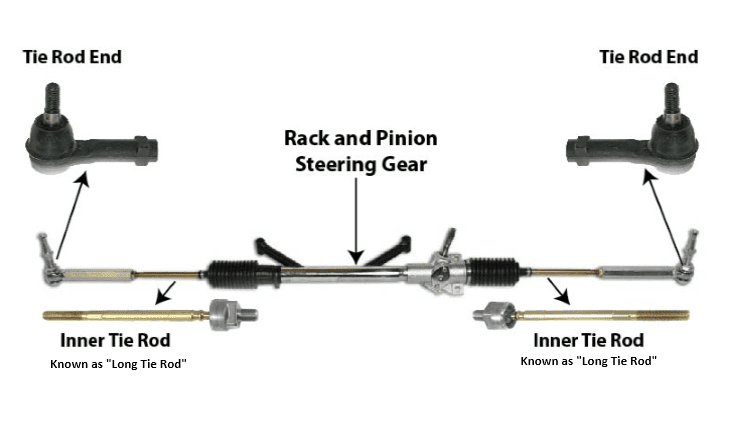Bad tie rod symptoms
The tie rod is one of the car components located in the steering system. There are two types of tie rods (especially those that use a rack and pinion steering system), namely the long tie rod (inner tie rod) and the tie rod end (outer tie rod).
The long tie rod is a ball joint tie rod which is long in shape and is directly connected to the steering rack, while the tie rod end is attached to the wheel knuckle and connected to the long tie rod.
Because these are parts of the steering system, when there is damage, the effect will immediately be felt and have an impact when we drive the car. Well, in the following article, we will inform some of the symptoms of a bad tie rod that we can feel and know when driving.
1. Noises coming from front car suspension
The first symptom of a bad tie rod is the appearance of noises coming up from front car suspension. Yes, a bad tie rod often makes a sound like a metal clashing metal. The sound varies depending on the opinion of the person listening. Some will hear like clunking, rattling or knocking.
This sound often heard when the car is driving on a bumpy road or an uneven road. The vibrations received by the tire from the rough road surfaces will make the ball joint on the tie rod moving slightly, it causing the noises sounds to appear.
It also often appears when we are turning the steering wheel. The place of the sound depends on the position of the broken tie rod. If it damaged on the right side, then the sound is heard on the right side, and vice versa.
2. Vibration on the steering wheel
The next symptoms of a bad tie rod are the vibrations on the steering wheel. Broken tie rods generally occur due to worn-out ball joints. The wear on the ball joint and its housing will create gaps inside the tie rod.
So, when the car runs on an uneven road, the two components (ball joint and housing) that have a gap will collide with each other due to vibrations that arise from the road surface. When the ball joint hits with each other, the vibrations will also appear and can felt up to the steering wheel. These vibrations generally occur when the ball joint is in a colliding position.
If you feel this when driving on uneven roads, it's natural to be aware that your car's tie rod starts to get damaged.
3. Car direction is not going straight
The symptoms of a bad tie rod can make the car direction that is no longer going straight. The term "steering wheel throws", which is a condition where the direction of the car cannot move straight forward and always throws in one direction, for example to the left or right.
So, even though you have tried to direct the steering wheel to keep it straight with the road, the route of the vehicle cannot follow the direction of the steering wheel. It always moves back in one direction only.
That can be happen because of a bad tie rod will change the steering angles. It will affect the overall direction of the car and makes the car feels throwing away to one direction.
4. Uneven front-tire wear
The last symptom of a bad tie rod is uneven tire wear. Although it is not an unusual characteristic due to a bad tie rod, the uneven wear surface of the front tire can also cause by a damaged tie rod. A bad tie rod, in addition to changing the steering angles of the wheel, it will also affect the parts of the tire tread on the road surface.
When the tie rods stretch outward, it will be eroded by the road surface on the inner side of the tire. While when the tie rods pull inward, the outer side will scrap by the road surface. This condition will result in uneven wear on the entire surface of the tire.
